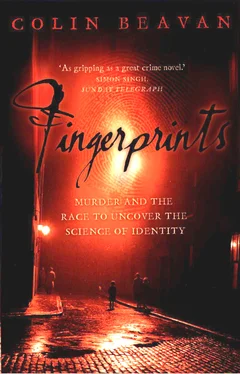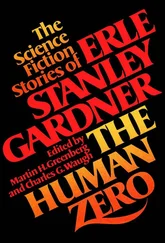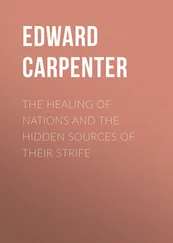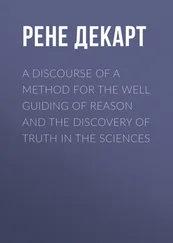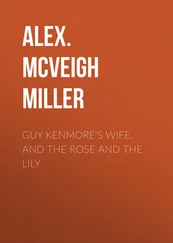Three Like Rats with No Rat-Catcher
In July 1858, William James Herschel was promoted and given charge of a rural subdivision in Bengal, India. At the young age of twenty-five, after five years as someone else’s gofer, he was suddenly the final authority on everything from his district’s tax collection to its road building. He was mayor, sheriff, and judge all wrapped into one, except he didn’t get his position because he was popular and he hadn’t won an election. He had been imposed on the local people by the British Lieutenant-Governor. And the ambitious young Herschel intended to make a splash, a particular challenge because of the period’s civil unrest.
At the time, Indian citizens would do anything to make things difficult for the much-hated British administration. They didn’t show up for their jobs. They stopped cultivating the British landowners’ farms. The didn’t pay the rent. Frustrations were great for accomplishment-minded young officers like Herschel. Many of their orders were deliberately disobeyed, and much of the rest had no one to carry them out.
Undeterred, Herschel decided, within weeks of his new appointment, to construct a new road. He negotiated the necessary contracts in the sticky heat at his new headquarters at Jungipoor, up the Hooghly River from Calcutta. One of the deals he struck was with Raj Konai, a contractor, for the supply of road-making materials. Herschel was proud of their arrangement. The terms were favorable to the government. But contractors, no less subversive than the rest of the population, had lately made a habit of breaking their contracts. Herschel worried that Konai might deny his obligations.
Herschel’s mind raced as he read over their agreement, penned by Konai in Bengali script. Even this written contract might prove useless, Herschel realized, since contractors had begun to deny their own signatures. Suddenly, it occurred to him “to try an experiment by taking the stamp of his hand … to frighten Konai out of all thought of repudiating his signature.” This spontaneous printing of Konai’s hand would later lead to Herschel’s being the first in British history to regularly use fingerprints officially.
Born on January 9, 1833, William James Herschel came from an eminent scientific family. His grandfather William Herschel, an astronomer, discovered the planet Uranus. His father, John Herschel, also an astronomer, invented the sensitized paper on which photographs are printed. As a young man, William James, too, was scientifically inclined, but his father encouraged him to strike out in a new direction, so he joined the Indian Civil Service at the age of twenty. Five years later, his promotion to Assistant Joint Magistrate and Collector came in the wake of the Sepoy Mutiny, a beginning in India’s struggle for independence and the reason for the civil unrest in Herschel’s new district.
The mutiny began after sepoys, Indian troops employed by the British, protested the recent issue of the new Enfield rifle. To load the Enfield, the ends of its cartridges, believed to be lubricated with pigs’ and cows’ lard, had to be bitten off. This clashed with both Hindu and Muslim dietary prohibitions, and in April 1857, sepoy troopers at Meerut refused to use their new rifles. When they were jailed for their refusal, their incensed comrades rose up and shot their British officers, sparking a murderous rebellion that swept the country.
The British responded with ferocious vengeance. Shipped-in reinforcements took no prisoners, bayoneting to death captured sepoys in frenzied massacres. They hanged whole villages, including women and children, for their perceived sympathy with the mutineers. Even after the revolt was suppressed in mid-1858, British soldiers lashed sepoys convicted of mutiny to the muzzles of their cannons and fired cannonballs through their chests. With their bodies blown to pieces, according to Hindu religion, the victims had no hope of entering paradise, making the punishment even more cruel.
The slaughter ended but the conclusion of what the Indians called “the Devil’s Wind” did not halt the population’s defiance of the unpopular British ruling class. Terrified of revenge for outright rebellion, they subtly engaged in various forms of civil disobedience, including the breaking of contracts with administrators like Herschel. If the administrators took them to court, the Indians simply repudiated their own handwriting. The British were in no position to insist that a signature written in Bengali had come from any particular hand, especially given the region’s volatility.
Hoping to keep his road-building project on track Herschel wanted a signature from Konai that couldn’t be so easily denied. “I dabbed his palm and fingers over with homemade oil-ink used for my official seal, and pressed the whole hand on the back of the contract,” Herschel wrote in his memoir The Origin of Fingerprinting . He made a second impression of his own hand, on a separate paper, and pointed out to Konai the distinctive differences between the two. You may think you can deny your handwriting, Herschel communicated to Konai, but you’ll never be able to deny that this outline of a hand and these lines of the palm belong to you and no one else. The scheme worked. Konai delivered the road-making materials as promised.
Herschel, impressed with his newfound ability to frighten someone into honoring a contract, experimented with handprints until he eventually hit upon printing just the fingertips, which was less messy. The Chinese and Japanese, probably the first to make widespread use of fingerprints as signatures, had used them on contracts as early as 600 A.D. Herschel, several authorities have written, likely borrowed the idea from a colony of Chinese living in Calcutta, though Herschel always insisted that the fingerprint conception had come in a sudden flash of his own inspiration.
In 1859, Herschel began collecting, as keepsakes, the fingerprints of his friends, colleagues, and family. Each impression, Herschel noted, was different, convincing him, over time, that fingerprints were unique to each individual. His notebooks included fingerprints taken from the tiny fingers of babies, from Indian nobility, and from old college friends, all dated and labeled by name the way some people collect autographs. He even took the inked impression of a dog’s nose: “a little white and black terrier at 2 months.” (Much later in history, the inked imprints of the skin patterns on the noses of cattle and horses would also be found to be individual and used to identify them as a safeguard against theft.)
In 1860, Herschel came up with another application for his fingerprint idea. In Nuddea, near Calcutta, where Herschel took a position as magistrate, the landowners had been turfing the tenant farmers off the land for non-payment of rent. The farmers, who cultivated indigo, the primary ingredient of blue dye at the time, couldn’t pay because the landowners had not discounted rents in line with an indigo market decline. Disputes between tenants and farmers erupted at first into riots and later into the courtrooms of magistrates like Herschel.
Tenants, desperately clinging to their land, insisted that landlords tried to collect much higher rents than they’d agreed on in their leases. They presented the supposed documents as evidence, but many of them turned out to be forgeries, made particularly hard to detect because they were impressed with replicas of the landlords’ seals. Herschel, frustrated by the flow of worthless paper through his courtroom, concluded that landlords should throw out their seals and instead authenticate leases with fingerprints. He set out to develop his fingerprint signature idea for widespread use.
He concerned himself first with insuring that fingerprints could not be forged like the landlords’ seals. He commissioned artists around Calcutta to copy his fingerprint, but none made even a close facsimile. In anticipation of the businessmen’s objections to the messy application of ink to their fingers, he wrote in 1862 to his much more practical brother-in-law, Alexander Hardcastle, and asked him to “devise an utterly simple device for inking the finger.”
Читать дальше
